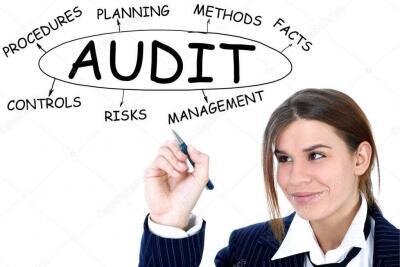
First Party Audits, also commonly known as “Internal Audits” are conducted by an in-house management team. These audits should be performed on a periodic basis. The purpose is to monitor and ensure that all the processes meet all the requirements of ISO standard. Another way to gauge the effectiveness of QMS (Quality Management System) and adherence is to conduct an internal audit by a cross-functional management team.op
But Why Doing First Party Audits?
First Party Audits, help you re-evaluate your management system’s current position with ISO standards’ requirements of policies, procedures, and quality frameworks. This helps keep safety, legal, and regulatory requirements in check. Management and employees can easily overlook major loopholes occurring daily in their management system.
A first-party audit can:
- Identify possible weakness occurring in the quality management system.
- Bring to light any problems leading to legal action and prevent non-compliance penalties.
- Create awareness of loopholes in the system that are responsible for waste.
- Trigger corrective and preventive actions.
- Ensure consistent adherence to the quality management system.
Please note that an internal audit must be well-planned and well-informed so that it can add value to the business.
Where to Start?
Got no idea how to start an internal audit or first party audit?
Here are five necessary steps that are needed to be taken to kick start First Party Audit exercise,
- Planning the First Party Audit with the Team and Stakeholders
- Take time for yourself to get prepared as an auditor and give time to others so that they can brush up their knowledge.
- Execute audit exercise.
- Have a closing meeting and report about the audit outcomes.
- Have a meeting for corrective and preventive actions and follow up for pending operations.
Planning First Party Audits
It is vital to plan first-party audits effectively rather than executing it blindly. First and foremost step is to craft a rock-solid plan that meets all organizational needs and fully aligns with all the available resources.
The audit plan must include all the areas that you are needed to be audited keeping the criticality of the manufacturing process, level of experience of machine operators operating the critical machines and most problematic area according to quality flaws highlighted in last audit report.
Preparing the First Party Audits
The preparation step for First Party Audits has a checklist to get yourself well-prepared before the actual audit but not to forget that the most critical phase of audit performance is a valuable addition to the business in the big picture.
Before executing the audit, a First Party auditor you need to make sure the following tasks:
1. Notifying the Team
Notifying the stakeholders and auditees well before time via an email announcement and explain why we are interested in doing an audit. If you don’t inform the auditees well before time, then the practice of audit that you need to start will add no value, in fact, it will result as a waste of time for both the auditors and the auditees. Moreover, it can so become negative that instead of perceiving it as an improvement practice, one may consider it as a fault finding activity.
2. Selection of Lead Auditor and Auditors’ Team
in order to select the auditors’ team, first consider the size of the facility which will be audited by the auditors and number of areas that they will be visiting audit. The auditors’ team should have in-depth knowledge of all the core processes being followed. Basically, first party auditor is someone who is among the team and within the organization. Sometimes, few company owners prefer to have an auditor from some outside firm so that they can get the benefit when it comes to external auditing practice.
3. Process Documentation Review
Any of the associated warranty or availability of the data and reviewing the process documentation along with corrective and preventive action. One must need to educate themselves in process history. Auditors get yourself familiarize with other team members or process operators as it will help to comprehend your audit report. In continuation to review the documentation process, it will help you to pick and choose the most critical process areas and challenges that the team face during their journey towards completion of the process.
4. Making Audit More Effective and Successful
When it comes to proper preparation, do not take it as granted. Go for complete development by building an in-depth knowledge of how everything works. Communicate with the machine operators to know how they work and under which circumstances they work under and how willing are they to embed continuous improvement culture.
The Audit: The Big Day Arrives!
After taking your time to get yourself prepared about critical areas and areas of significant concern that directly affect the quality of products and services. On audit day, make sure to reach the audit place at least 30 minutes before the announced time.
Prepare the checklist of the mandatory requirements of the documentation of ISO standard against you are auditing.
Conduct an initial meeting with the team in which the team will provide you the basic outline of the process and auditees can take few minutes to inform their team members so that they can be readily available for the interview session that you may require to do with them. Ask questions and listen to them when they answer with undivided attention.
It is important to ask open-ended questions which can’t be answered with just yes or no. it is preferable to ask “What If” questions so that you can get more insights about how auditees run their process keeping compliance in consideration.
Take notes of the responses but don’t violate the process privacy — document all necessary evidence required to mention in the audit report. On successful completion of the audit, don’t forget to thank auditees’ team for taking their time out and trying their best to satisfy all your queries.
